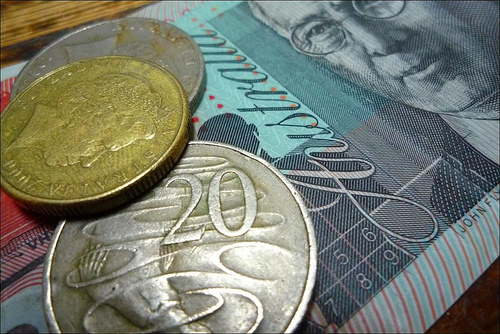NSW budgets for health and transport IT

The NSW state government has handed down the 2011-12 budget today, providing a raft of IT-related hand outs across several departments, but the bulk of these were set aside for eHealth and transport.

(Australian Coins and Notes Macro image by Martin Howard, CC BY 2.0)
In NSW Treasurer Mike Baird's first budget, he revealed that the state would this year see a $718 million deficit, with a projection for the budget to swing back to surplus in 2012-13.
The Department of Health will commence the delivery of major eHealth projects, including the $170 million electronic medication management program. CSC national director for health services Lisa Pettigrew welcomed the news, stating that "it is heartening to see eHealth as a recognised, crucial enabler to a modern, safe and quality healthcare system."
She said that the funding would assist in improving medication safety, and saving lives and clinicians' time, while potentially reducing expenditure in future budgets.
The state will also see electronic ticketing reach ferries late next year, with the Department of Transport having $110 million set aside for the roll-out. On the rail network, $105.8 million has been set aside to make the necessary upgrades on rail infrastructure to accommodate $358 million worth of new Waratah trains. Passenger information systems on the rail network will also be upgraded, with $12 million budgeted for improving customer communications.
The NSW Police Force has had several lines of funding secured for IT-related projects. Over four years, $25 million has been set aside to enhance DNA testing capability and reduce forensic test backlogs; $7.2 million over two years for its 100 Mobile Automatic Number Plate Recognition units; $35 million on information technology that will support police in reducing crime and violence, which includes the $12.3 million to upgrade to its Computerised Operating Police System, and $9.2 million to replace technology assets; and $9.9 million for maintaining and upgrading the radio network and communication infrastructure.
The New South Wales Crime Commission did not receive any IT-related funding, but has the goal of increasing its efforts in electronic and similar surveillance, and pursuing new methods of cyber investigation to address emerging criminal practice.
The Department of Rural Fire Service has had $16.6 million reserved to continue upgrading the private mobile radio network that volunteer fire fighters use. It will also aim to improve its response capability by implementing a computer-aided dispatch system in the future.
Fire and Rescue NSW has $4.5 million set aside to enhance and consolidate an electronic human resource management platform (SAP HR) for the emergency services sector. In the future, it will also upgrade its Emergency Services Computer Aided Dispatch system.
The State Emergency Service (SES) will have $8.9 million set aside for technology applications and equipment to enhance volunteer support, flood and storm operations response and community information.
The Department of Attorney-General and Justice will spend $6.8 million to further transform courts and tribunals through greater use of technology and in the future plans to increase the use of social media to directly communicate with the community about crime.
The government-owned shared services company NSW Businesslink will also have $65 million reserved for information technology systems to improve shared services, deliver benefits for clients and align its processes with government reforms. It will also have $7.4 million set aside for IT systems for staff that support people with disabilities.
The NSW Food Authority has $581,000 to develop and maintain business systems, including $209,000 of capital expenditure on wireless internet access for field-based staff.
The State Records Authority's initiatives will include spending $3.5 million over three years to build its capacity to accept, preserve and make available the government's digital records. In future years, it will also continue to develop its Web 2.0 communications profile, using blogs and the Flickr website, to reach its clients in both the government and the community.
The Department of Premier and Cabinet has been set aside $2 million to continue to replace the Parks and Wildlife radio network for park management and fire fighting, $1.7 million to improve environmental monitoring and compliance with satellite imagery and $1.2 million to upgrade the Parks and Wildlife website and online booking system.
Department of Planning and Infrastructure will have $4.3 million to put towards delivering its ePlanning platform, while the State Library of New South Wales will spend up to $7.5 million on expanding its electronic catalogue.
Several government agencies are also due for an upgrade in their hardware and software. The Workers' Compensation (Dust Diseases) Board will have $1.9 million to buy computer equipment and software, the Independent Commission Against Corruption (ICAC) will spend up to $2.7 million over four years on its infrastructure, software and equipment, the Ombudsman's Office will have $219,000 to spend on capital works mainly related to its IT equipment, the Police Integrity Commission will spend up to $1.6 million on its IT systems upgrades and the Audit Office of New South Wales has $5.1 million set aside to upgrade its IT and improve its audit methodology.